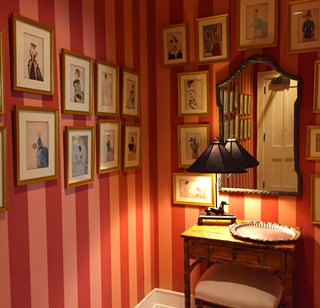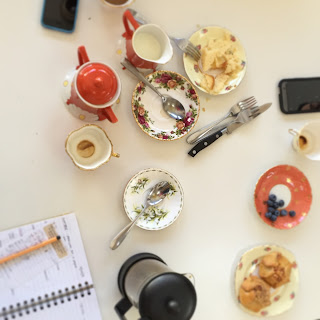 |
| Alexa's beaming 'circle of death' |
This weekend as we were putting our christmas tree up, we were joined by a new member to our technical family - Alexa; a wireless voice activated speaker. The joy in our household quickly fizzled as it was clear Alexa was all Function and no Fun, the ultimate electronic FFF. Unlike Apple's Siri, Alexa would not respond to silly questions my 6y boy had come up with, leaving him hanging with her blue round 'circle of death' (as my 10y calls it) beaming in front of his eyes. I'm no Siri fan, to be honest all these voice activated devices make me feel uneasy, but at lease she has some artificial intelligence sense of humor built into her.
Looking deeper into pure functional form of things is a true design exercise. I'll be the first to admit that I too, am a purist, coffee will be coffee no hazelnut-vanilla flavor for me, and I admire clean modern lines in clothing, furniture, light fixtures, and spaces. Usually things that are made to function well, will be less wasteful and harmful to our environment. BUT then I find something is lacking. A human touch, a smile, a sprinkle of sparkle.
As we brought in our christmas tree, our usually clean lined home, suddenly became friendlier. It smelt like pine, and by the time we were done decorating our spirits were happy and joyful. If ever there was an antithesis to FFF - it's christmas. It's not sustainable, no clean lines, no function what so ever, and full of ornaments. What a christmas tree lacks in function it makes up for in full blown spirit, a magical feeling that we can put last year and it's troubles to bed, that rejuvenation is on its way. Not functional, yet truly valuable for us as humans to feel.
 We should not want to live an a highly functional society that in many ways acts like Alexa. Just looking into the personalities that have brought the likes of Siri and Alexa to the world will allow us a window into the algorithms that rule our day to day searches, and more important - finds. They narrow our peripheral view of things in life, they eliminate exploring further in new ways. This is alarming because as much as I like clean lines, and functional spaces, I love having happy sloppy and messy mistakes that allow me to pause and smile, remind me that after all I am human that not only Functions but also Feels.
We should not want to live an a highly functional society that in many ways acts like Alexa. Just looking into the personalities that have brought the likes of Siri and Alexa to the world will allow us a window into the algorithms that rule our day to day searches, and more important - finds. They narrow our peripheral view of things in life, they eliminate exploring further in new ways. This is alarming because as much as I like clean lines, and functional spaces, I love having happy sloppy and messy mistakes that allow me to pause and smile, remind me that after all I am human that not only Functions but also Feels. 






